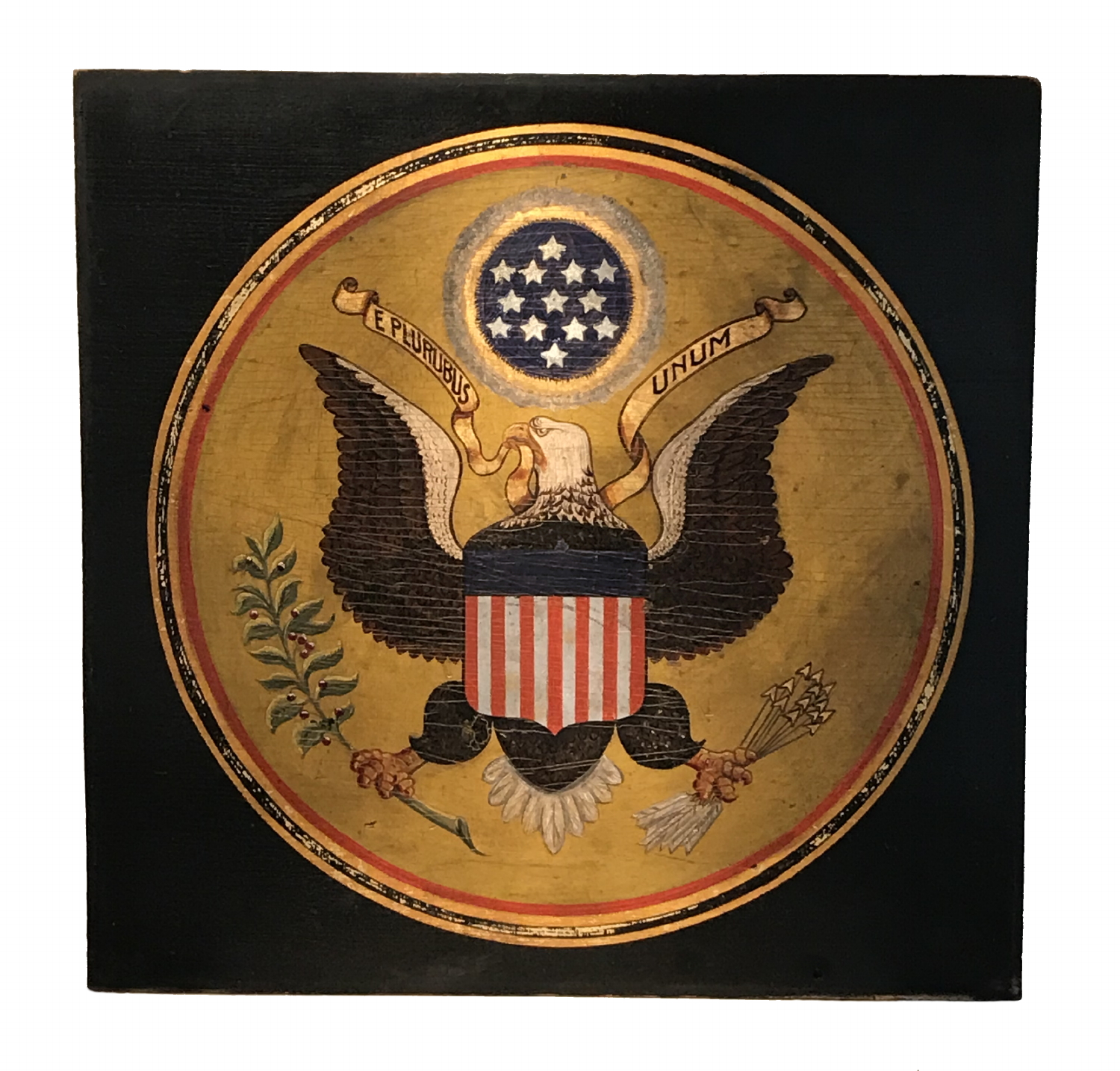
| |
GREAT SEAL OF THE UNITED STATES IN OIL ON WOODEN PANEL, A FINE AND COLORFUL EXAMPLE WITH EXCEPTIONAL, ORIGINAL SURFACE, CIRCA 1876-1890 |
| |
|
| Dimensions (inches): |
19.5" tall x 20" wide |
| Description: |
|
Painting of the Great Seal of the United States, executed in oil on a wide, one-board panel of white pine. Measuring approximately 19.5" tall x 20" wide, the work is vibrantly colorful, rendered in red, yellow, green, blue, burgundy, brown, black, and white, plus gold gilt and metallic silver. These are set upon a dark brown ground, nearly black, that creates stark contrast. Dating sometime between roughly 1876 and 1890, the paint surface is exceptional, with a level of fine crazing in the dark ground and striped border, and attractive craquelure within the circular center, that are precisely what collectors of original surface and American folk art crave in 19th century objects.
The eagle is beautifully executed. There are 13 stars in the top center, set against the shining sun, with a cloud behind. There are 13 pales (vertical stripes) on the shield, 13 arrows, and 13 olives on the branch.
Seals of all sorts, state and federal, varied a lot in early America, with artists often taking great liberty, and working off old versions, verbal descriptions, memory, hand sketches, and sometimes the opinions of the various parties involved in any particular commission. That said, the image that appear in this work does happen to match the style adopted on the 1885 version of the official, congressionally-adopted design, which has stood the test of time and remains basically the same today as it was then.
The Second Continental Congress named the first committee to design a Great Seal on July 4, 1776, the same day that independence from Great Britain was declared by the thirteen colonies. In its formative stages, the stars were, on more than one occasion, randomly positioned, but the design that appears on the earliest known die cut, dating to 1782, and that which was formally adopted in 1789, show the stars in a 6-pointed Great Star (a star made out of stars, as-is seen here).
On close examination, one will note that the color of the pales is reversed from the actual design. These start on red and end on red, like the stripes on the current American national flag. It is a general rule of heraldry, however, to begin such a sequence on white, so that on the official seal, the pales begin and end on white instead of red.
The panel is remarkably thin, with a depth of about 3/8", though it remains nearly devoid of warping. It appears as if the panel was mounted within something. Probably it was built into a paneled wall in a government building or courthouse.
Condition: There is minimal paint loss, primarily limited to the black-painted portion of the stripes border, but there are no further issues of significance. |
|
|
| |
|
| Primary Color: |
brown, yellow |
|
| Earliest Date: |
1876 |
|
| Latest Date: |
1890 |
|
| For Sale Status: |
Sold |
|
| Price |
SOLD |
|
| E-mail: |
info@jeffbridgman.com |
|
 |
|
Page Views:... 1576 |
|


